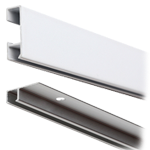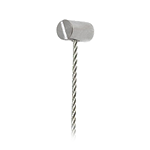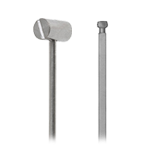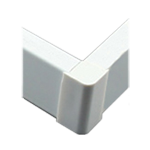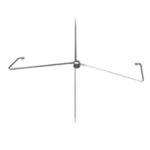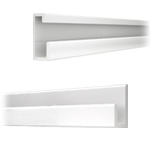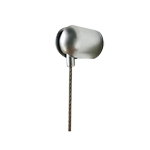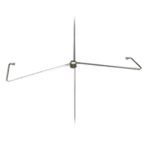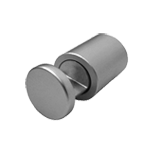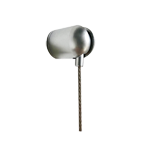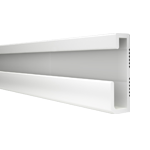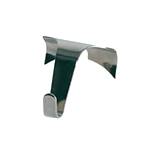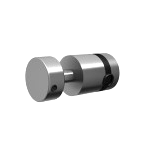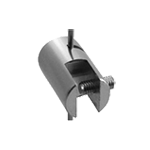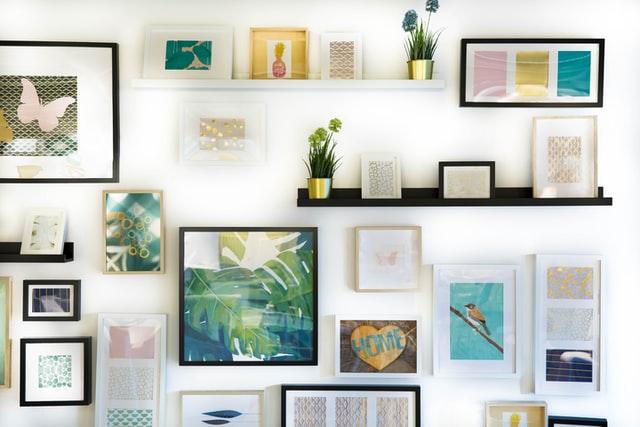4 Inspiring Ways to Display Artwork in Your Home
Furnishing a home and choosing works of art that will adorn it can be an exciting adventure and a source of pleasure. The key to success in finding the perfect pieces is discovering the kind of art you love, finding ways to fit it into the interior of your place, and discovering how to display artwork in your home. There are three simple postulates to make it easier for you to display pieces:
- composition
- rhythm
- balance
Before you start suspending your works of art, consider the characteristics of the space where they will be placed: its design, brightness, dimensions, and proportions. We will start with the list of general tips on showcasing the pieces in a home, then move onto the ideas for inspiring ways to display the artwork.
Tips on displaying artwork
- You should not place a small painting alone on the wall, especially not in the middle. An oversized painting on a wall of modest dimensions might also seem inconsistent and out of place.
- If you place only one piece, the general rule is for its center to be positioned about 1.5 m from the floor. If you want to put up several works of art, look at them as a whole. It's recommended that the center of the composition is also at the mentioned height.
- If you place artwork on the wall next to the headboard, put it as low as possible - 15-20 centimeters above the end of the headboard.
- If you wish to avoid reflection from the glass that covers the artwork or reduce the accumulation of dust on it: hang the piece at an angle so that the upper edge is slightly away from the wall.
Different types of artworks and compositions
- When you have the idea to turn one whole wall into a gallery with several paintings or photographs, determine one of them as the central motif. The composition does not have to be symmetrical. However, it would be best to take care of the distance between larger pieces (no less than five centimeters).
- Watch for the technique of the artworks. It is desirable to group works made with the same technique. Otherwise, it would be better to separate them into different wall surfaces.
- You can place watercolors, drawings, graphics, or works by the same artist together, but take into account the predominant colors too.
- You can hang oil on a canvas of larger dimensions and intense color as a stand-alone on the wall.
- Sculptures can stand on the floor, table, or pedestal, while paintings are most often hung at eye level.
- The art pieces should build a harmonious whole with the furniture in your home.
How to choose a passe-partout and frame?
The crucial thing in framing artwork is the artwork itself. Let the passe-partout and the frame complement the piece, not only the room.
Passe-partout
A passe-partout is an element of a design that can emphasize colors, and it serves to draw attention to a painting or enlarge a framed work.
- Upper passe-partout
It is usually best to choose a neutral color in tune with the background color of the piece.
- Lower passe-partout
The lower passe-partout can emphasize the prominent colors in the design and give a unique look to your framed part.
Frame
The frame gives support to the artwork, both decoratively and in terms of solidity. The frame should contribute to the image, not distract from it. It is usually chosen with regard to the style and the period when the painting was created. If you have a set of pictures (a series), use the same frame and place them in the space.
- Color
In general, the frame looks best when in harmony with the dominant background color. If that background color is very intense, a softened version of that color should work great for the frame.
- Size
The width of the frame must be proportional to the size of the image. A more comprehensive work usually requires a broader, heavier frame. On the contrary, a small piece will look best in a narrower frame.
- Details
When possible, choose a frame shape and similar surface details as the image itself. The artwork with round shapes and curves looks completed with a rounded frame. Similar details on the frame can enhance the design elements of the piece.
Technical elements
Before you set up a display system, make sure there is no pipe or electrical installation in that spot behind the wall. Check whether the wall is made of reinforced concrete or not, because in that case, you will need a more powerful drill to install the bolts. Also, it would not be suitable for the wall to be damp, exposed to a heating element, or direct sunlight (this is especially important if it is oil on canvas because it can fade).
When determining where to place the artwork, it is much better to use screws instead of nails because they are more durable and less likely to cause the piece to fall off. You can also get a hook - they come in different sizes for hanging lighter, medium, and heavier items. If you decide on a nail, type it at an angle of at least 45 degrees.
Now let us continue onto the creative ideas for displaying your pieces of art.
Inspiring Ways to Display Artwork in Your Home
Have you ever wanted to dedicate a wall in your home to your favorite paintings, photographs, or graphics? There are countless possibilities for decorating such a wall, so it is worth looking for inspiration and advice. The first thing you need to pay attention to is that, in addition to expressing your personality, this kind of display should also fit well into the style of your home. If you have decided to exhibit artwork in your home, we have prepared some inspiring suggestions that will help you realize your idea.
#1 Gallery Wall
A gallery wall display is one of the things that will never go out of style if done right. However, curating such a display (picking and purchasing the pieces) can be challenging and costly. But since you are unique and special, your gallery wall and home should be, too. When you get together the pieces you want, you will want to make sure you have the art pieces transferred stress-free. And then it's time to create a design and start putting them up. We have the advice to help you with that.
Create a color palette
If you'd like your gallery wall to look slick, elegant, and curated, you should find a color palette to stick to. However, this is not a must - if you are going for a more relaxed and fun look, go with the pieces you like and think that will go well together.
Find an anchor piece
It's clever to establish your larger piece(s) and work around that. Do not put it in the very middle - it's best if you place it just off-center or in one of the four outer corners of a gallery wall. By doing this, you will spread out the viewer's attention, so it's not focused only on the center of the wall.
Mix your verticals and horizontals
With a mix of horizontal and vertical pieces, you will give your wall a dynamic feeling and keep it interesting. If your more prominent pieces are vertical, try putting smaller horizontal ones next to them to switch it up.
#2 Solo Display
If you want to put all of the focus on the prominent piece of art you own, we recommend you display it by itself. When it comes to the theme of artwork and their arrangement in the house: paintings of soft, pastel colors are often placed in bedrooms, while darker colors and themes are great for the dining room.
An oil painting (if you have one) can occupy the central, focal point of the living room, usually above a couch or fireplace. You should hang it accurately. It would be best if the painting does not exceed the total width of the furniture. If the piece is more extensive, it can go on the staircase for maximum use of space. If you have a small room, avoid large pieces and vice versa.
#3 Symmetrical Balance
This setting involves hanging pictures in a row, either horizontally or vertically - linear or in a grid. The linear display will emphasize the rhythm and balance in the room. Works that are of the same dimensions and framed in the same frame are suitable. This configuration fits large walls and highlights another horizontal element in the interior, such as a bed or a dining table.
A grid is also a striking setting created by precisely arranging the frames in a horizontal and vertical row, and like a linear one, this way of organizing requires pieces of the same dimensions and frames.
It can be inconvenient because a perfect alignment is needed, so you should pay attention to the length of the hanging cables and measure where the frame should be attached.
#4 Display shelves
If you like to change the exhibited works often, then this is the right option for you. Shelves are suitable for displaying pieces of different sizes, and they also provide the possibility to place smaller frames in front of larger ones. In addition to shelves, you can display works of art on other pieces of furniture, such as a dresser. This approach also provides a lot of flexibility.
When you are moving, or you are in-between places, it's best not to create a permanent showcase but go for an option like this. During the relocation, it would be best to let getmovedtoday.com handle your artwork so they don't get damaged on the way.
FAQ
- How to not go wrong when making a display for a gallery wall?
Before you start drilling through your wall, you should get a feel of the space first and plan everything out. Measure the amount of space you are working with and mark it on the floor. Then you can put your artwork there and play around with it until you reach the concept you're satisfied with. Then take a picture and carefully transfer everything to your wall.
- What about three-dimensional works?
It would be good for sculptural works and figurines to carefully determine where to place them since it is not a two-dimensional base (such as photographs, paintings, lithographs, prints). Namely, being three-dimensional, sculptures are directly dependent on the amount of light that illuminates them to emphasize their qualities. If you receive a gift or buy a three-dimensional work, here are some solutions on how and where to display them:
Larger sculptures usually have their pedestal and are typically placed on the floor, and the light should illuminate it from a height.
Smaller ones are placed on shelves or a table. If you have more of them, you can group them, and for a stronger effect, illuminate them either from above or below.
- Where else besides the walls can you display artwork in your home?
If you want to be inventive and different, you can hang art on doors, shelves (if you don't want to drill a piece of furniture, use a self-adhesive hook), on a window (a great solution if you don't like the view) or on a fireplace.
We hope we have helped you get some inspiring ideas on how to display artwork in your home. With our tips and tricks, you will avoid making common mistakes. For everything else, you can rely on your taste and a bit of creativity.

